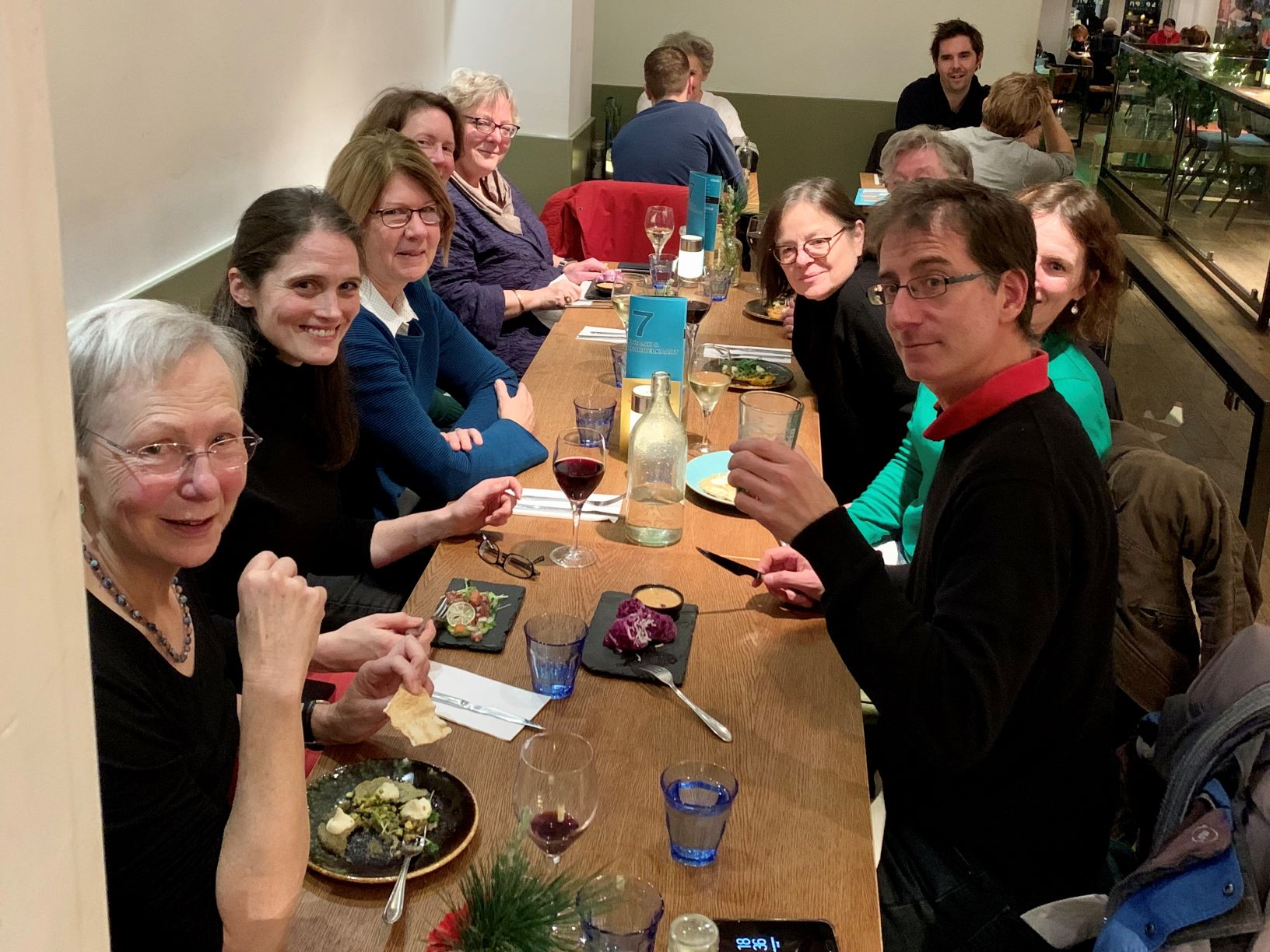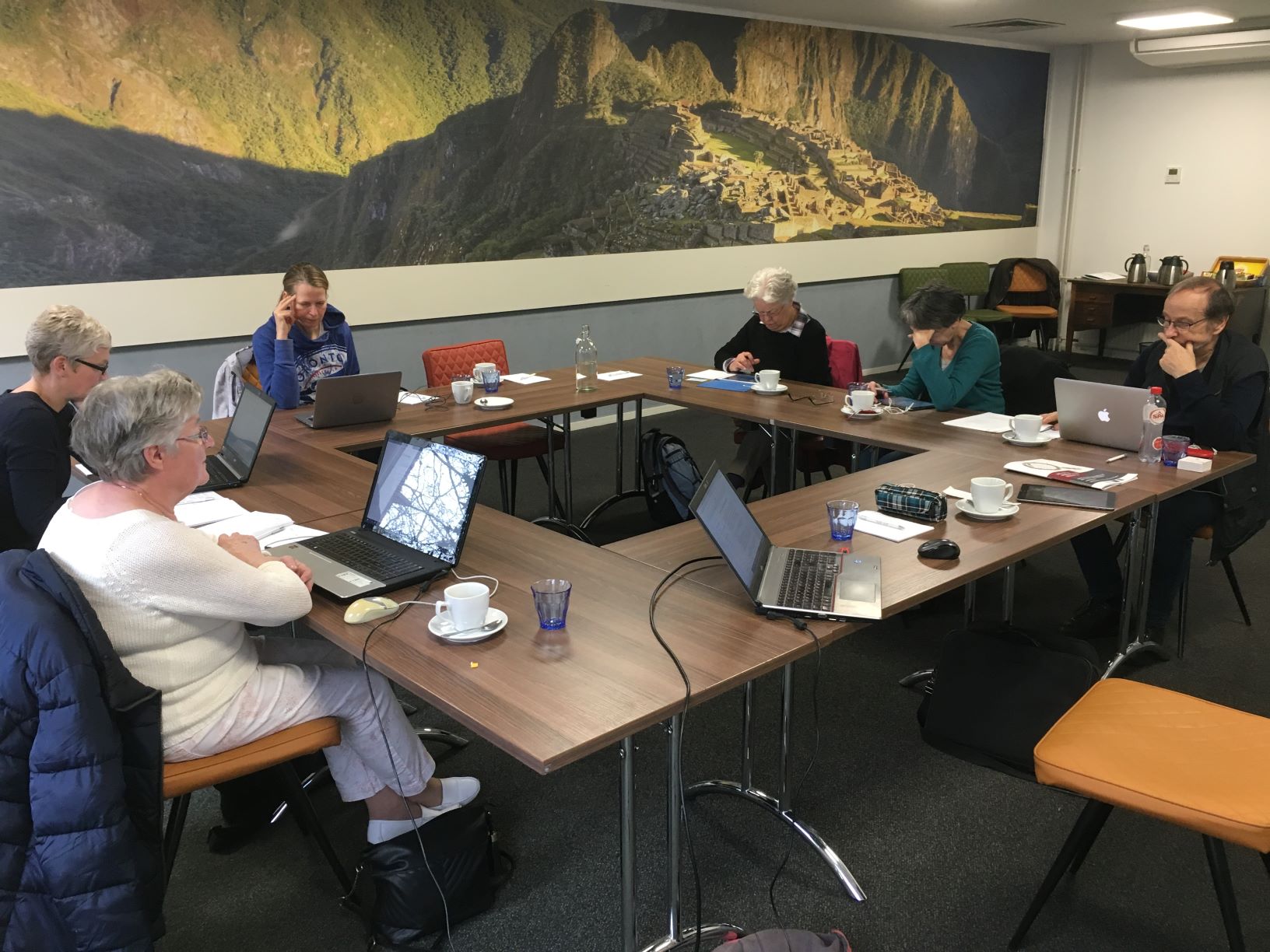In early December 2019, both the Ed SIG and UniSIG focused on academic writing. Below, Marianne Orchard reports back from the UniSIG presentation on editing texts for the humanities and social sciences. Jackie Senior tells us how the SENSE Ed SIG members discussed the use of online resources for academic writing.

Photo by Theresa Truax-Gischler
UniSIG: Editing humanities and social science texts: theory and practice (Marianne Orchard)
Fourteen of us turned up for the UniSIG meeting at Se7en in Utrecht on Friday 13 December – as if we’d thought the venue would only accept multiples of seven. We’d come for a presentation by Theresa Truax-Gischler and Maria Sherwood-Smith on the American Council of Learned Societies’ Guidelines for the Translation of Social Science Texts.
The guidelines, Theresa explained, were developed to help those who commission edits and translations. ‘Given the potential of the social sciences to influence … millions of lives’, they declare, ‘it is incumbent upon both translator and editor to produce the most reliable translation possible.’
But what is a reliable translation or edit? Should you domesticate or foreignize? Maria had faced this conundrum when translating a Dutch book on 19th-century correspondence. In a more cerebral version of Snog Marry Avoid? she had had to decide whether to translate, gloss or borrow archaic forms of address such as uedele, wel edele and gij.
And given the importance of storytelling and voice in the social sciences, should you level stylistic peculiarities or allow a note of foreignness to enter the text? And what about errors in the source text? Translators and editors, say the guidelines, ‘…must not attempt to correct what they perceive to be errors in the text.’
We decided it boils down to whether you privilege the source text, as the guidelines prescribe, or the target text. However, as many of us have a direct relationship with the author, perhaps we are like quantum particles and can exist in two states at once: as both author’s and reader’s editor/translator.
Photo by David Barick
SENSE Ed: Online Resources for Academic Writing (Jackie Senior)
First, David Barick reported briefly on the EU-MIRoR conference (Methods in Research on Research) that he’d attended in Paris. This project aims to reduce wasteful clinical research and increase the value of research practice. Then we moved on to the main subject of the afternoon: discussing the numerous online resources for learning about writing in English and about academic writing. Such resources need to be chosen carefully to match the learners’ individual needs and the course being given: no easy task given the number of websites available. It is essential to first specify who will be using the resource, at what level, and for what purpose.
David provided a list of resources and we looked at some together. These included the Springer, Purdue University, Columbia University and CARS model websites. As these are generally large, text-based websites, selecting what to look at was sometimes rather difficult. We had a lively discussion on some of the advice given (so many language professionals, so many opinions) and then we did some of the online tests offered to students for them to check what they had learnt. However, we found we sometimes needed more than one go to work out what the correct answer was. This highlights one of the difficulties for students using websites on their own: there’s not always an explanation of what they’ve done ‘wrong’. A face-to-face teacher can point students in the right direction.
We found each website missed some points we would have expected to be covered, for example, the use of the passive, nominalization, writing for a specific field, or relating the instruction to the student’s native language and to their concept of formal writing. We then looked at the AWL (academic word list) Highlighter. This tool highlights the formal words used in academic texts and gives the writer an idea of how much they are using the correct sort of vocabulary. It also offers help on meaning and pronunciation.
For the second half of the afternoon, we looked at videos that explained aspects of academic writing. Some of these were less than inspiring and consisted only of a person talking to the camera, while others (e.g. a TED talk on How to use semicolons) used visuals to attract attention and explain more complex points. Several videos were rather simple and proved a slow way of gathering information (since many people can read a text more quickly than listening to a speaker).
In the end, recommending one website over another proved rather difficult. We finished on a lighter note with the suggestion that all writers and students should watch Helen Sword’s YouTube video on Zombie Nouns, and follow her advice on writing vigorous, verb-driven sentences.
Please consult the SENSE Members’ Forum to see a complete list of resources used during the SENSE Ed SIG meeting.
